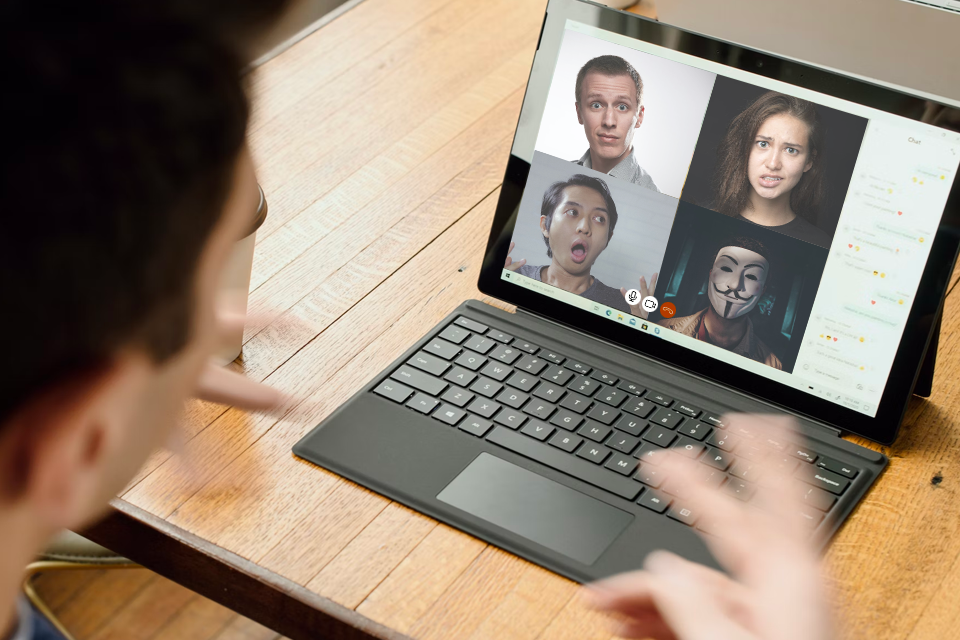Introduction
If you’re like the majority of Americans, you probably work from home at least some of the week. These days, you may not come into the office at all. In fact, more than 58% of the country’s workforce currently has a hybrid (trades off days in the office and at home) or fully remote (works only from home) schedule. If it’s not the case for you, then you probably have coworkers or bosses that this applies to.
Even before the pandemic, companies worked with outside contractors and foreign firms all of the time. Now, spurred by the massive uptick in remote working conditions post-2020, business communication platforms like Slack, Microsoft Teams, Zoom and so many more have enjoyed an increase in their userbase. It’s become necessary to unify organizations online, and quite commonplace to host everything from interviews to team huddles over video chat.
As an unfortunate consequence, that also means brand new cyberattack strategies have come out of the woodwork. Over 90% of people who use video conferencing software are both aware that these programs have security vulnerabilities, and worried about their ability to protect their data while using these programs which have been so necessary to the workforce. We must also consider that many workers use the chat features on these platforms to send confidential information to their colleagues, and all of that data is put at risk if these virtual conferences get breached.
Have you been unintentionally putting private data at risk during video calls?
Zoom Bombing
One particular cyber-threat took off during the pandemic. It’s known as Zoom bombing after the application, but could happen during any video call. This occurs when outsider parties break into an ongoing meeting and take over the screenshare feature to bombard the users with spam and inappropriate images.
Make your meetings safer by requiring authentic accounts through whatever program you’re using in order to join. With Zoom, only use your Personal Meeting ID for smaller calls; public meetings with your ID allow anyone who knows it to come in and out at any time, so Zoom bombers can easily take over at any time. You can generate a random meeting ID each time to keep them confidential.
Clear Your Desk!
One of the worst mistakes you can make is going through all the effort to secure important files on your computer, but then leave other confidential documents strewn about your office space for anyone to see.
Now, you might be thinking that the point of this is to ward off insider threats, which originate from someone within the organization. While that’s a very real danger, you also have to beware when you’re constantly coming in and out of video calls throughout the day. Mistakes happen, especially when you’re busy and juggling a lot at once. Leaving confidential documents out in plain sight means ANYONE you video chat with could see or even screenshot the information, to sell or ransom. Ju st like you wouldn’t leave your bank account open when you screenshare, you don’t want payroll sitting out behind you in plain sight.
Maybe you didn’t have to worry about this when meetings took place in a boardroom separate from your private workspace, but that’s just not the state of the business world anymore. Connecting more online means you need to protect yourself from new (and unexpected!) risks to your company and personal data.
Using VPNs
Another way that video conferences can be hijacked is through the Internet you’re using to host it. Virtual Private Networks (VPNs) are encrypted networks that hide your IP address while you’re online, so you and the rest of the organization can conveniently trade documents and data without worrying about a third-party spying on these communications, especially if it’s between someone in the office and someone working from home. Our houses tend to be equipped with fewer or weaker cybersecurity precautions than our offices. Establishing a company VPN protects files in transit so everyone can remain in the loop – except for the hackers.
The new era of remote and hybrid work schedules means finding creative solutions to bring everyone together. The Internet is the perfect place to do so, but it’s important to remain cyber-secure even as we connect to more and more people around the world.
Conclusion
Business communication apps have made it easier for people all over the world to talk to each other. However, it unfortunately also creates new opportunities for human error, cybercriminal tricks and network vulnerability exploitation.
Keep yourself safe while still enjoying the collaboration and communication of video calls! Here are a few tips to make sure nothing compromises your video calls:
- Clear your workspace of important files
- Set a password for meetings you start
- Send the password in a different message than the invite
- Use moderator controls like disabling chat and muting people during the meeting
- Require attendees to have an account to join
- Familiarize yourself with the ability to Remove Participants
- Get to know the Security tab for more In-Meeting controls!
Now you’re on your way to more secure video calls so you can get on with business. Follow our blog for more tips on keeping your network cyber-secure!
References
- https://www.northone.com/blog/small-business/remote-work-statistics
- https://www.oxy.edu/offices-services/its/services/video-conferencing/settings-prevent-zoom-bombing
- https://www.helpnetsecurity.com/2022/09/08/video-conferencing-cyber-threats/
- https://cybersecuritymagazine.com/video-conferencing-security-risks-and-best-practices/



